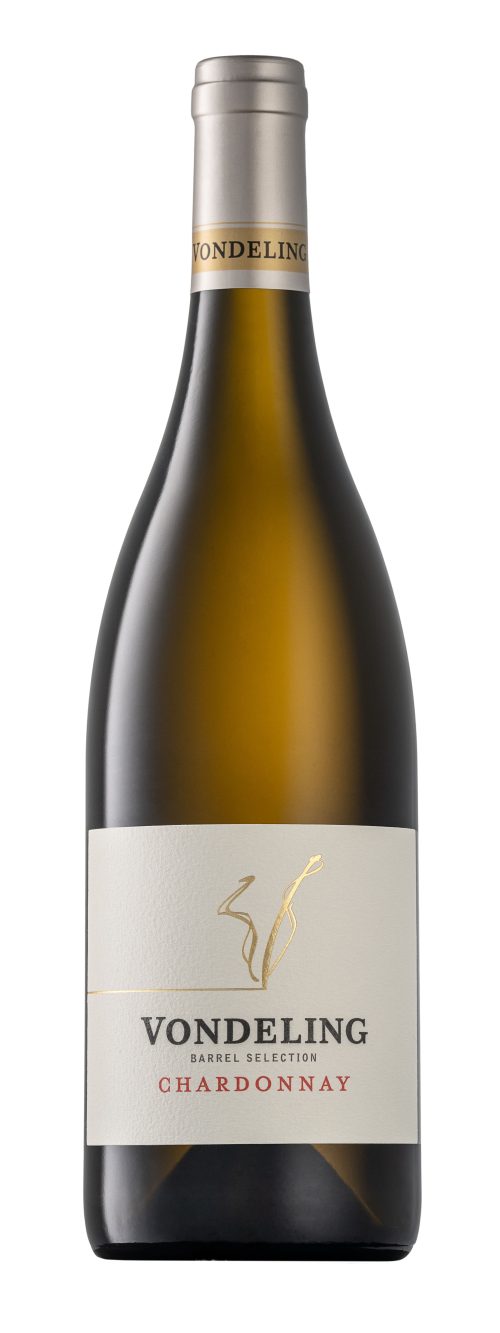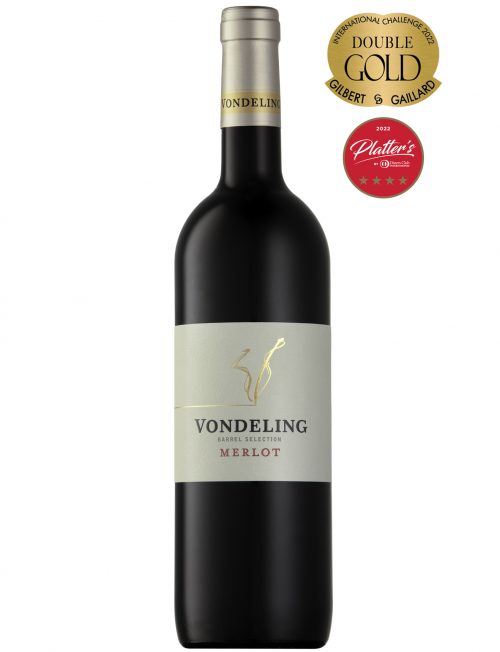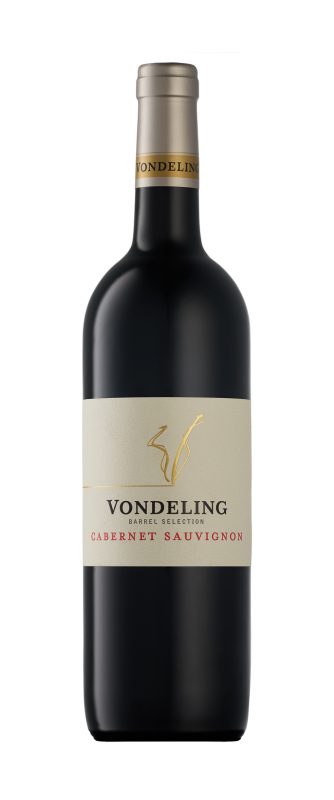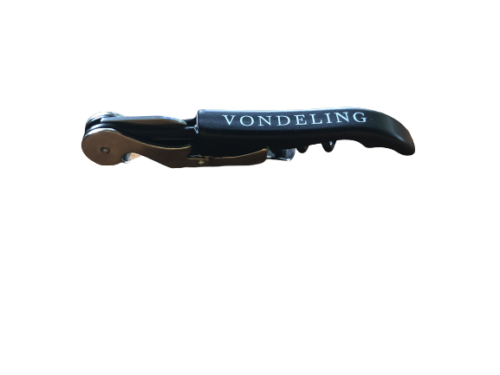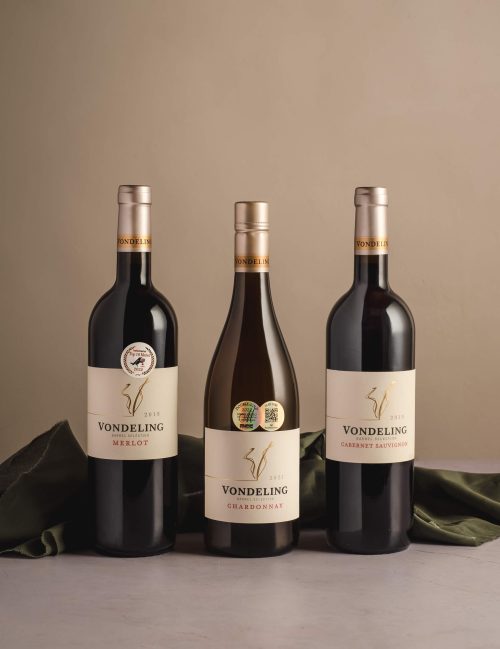-
 VINEYARDS Made primarily from cold-pressed Merlot, the anchor vineyard for this delicious wine is over 20yrs old. Located on a granite spur in the foothills of the Paardeberg Mountain, the berries are well exposed to sunlight. Exposure to sunlight is essential to eliminate green flavours from the fruit. The soil has a high clay percentage, and this lends softness and volume to the wine. Great care is taken to ensure that the vines do not bear too great a crop or suffer from drought. This is done through green cropping of the vines and micro-irrigation. Both practices help to preserve the natural acidity, freshness and vibrancy of the grape aromas. VINIFICATION Grapes are picked at optimum ripeness in the early hours of the morning before being destemmed and chilled before pressing. This short route, from vine to press, ensures minimal degradation of the fruit aromas and a very moderate extraction of colour. All free-run juice is kept separate from the colour fraction to ensure a deliciously subtle salmon colour. The juice is cold settled to remove any coarseness and fermentation is done in stainless steel tanks. The wine is 100% unoaked. A six-month period of maturation on the yeast lees promotes richness and complexity. TASTING NOTES & CELLARING & FOOD PAIRING The wine has a delightfully delicate, salmon pink colour. It displays a bright bouquet of Turkish delight, raspberry coulis, passion fruit, and taught grapefruit. The palate is well rounded but refreshingly vibrant, packed with red berry flavours, seductive floral undertones, and a pleasant citrus twist. Pair with spicy Thai prawns, grilled Portuguese sardines, or a fresh tomato, feta and pomegranate salad. Accolades 2023 Platter’s Guide-3.5 stars (85Pts) 2023 Vintage: 2023 Gold Wine Awards-Gold 2023 Vitis Vinifera - Gold 2022 Vintage: 2022 Michelangelo - Gold 2022 Gilbert Gaillard -Gold 2021 Vintage: 2021 Michelangelo - Gold 2021 Vitis Vinifera - Gold 2021 Rose Rocks - Gold 2020 Vintage: 2020 Rose Rocks - Gold 2020 Vitis Vinifera Awards - Gold Analysis pH 3.47 Total Acidity 5.5 g/l Residual Sugar 3.6 g/l Alcohol 12.57 % Download Tasting Sheet
VINEYARDS Made primarily from cold-pressed Merlot, the anchor vineyard for this delicious wine is over 20yrs old. Located on a granite spur in the foothills of the Paardeberg Mountain, the berries are well exposed to sunlight. Exposure to sunlight is essential to eliminate green flavours from the fruit. The soil has a high clay percentage, and this lends softness and volume to the wine. Great care is taken to ensure that the vines do not bear too great a crop or suffer from drought. This is done through green cropping of the vines and micro-irrigation. Both practices help to preserve the natural acidity, freshness and vibrancy of the grape aromas. VINIFICATION Grapes are picked at optimum ripeness in the early hours of the morning before being destemmed and chilled before pressing. This short route, from vine to press, ensures minimal degradation of the fruit aromas and a very moderate extraction of colour. All free-run juice is kept separate from the colour fraction to ensure a deliciously subtle salmon colour. The juice is cold settled to remove any coarseness and fermentation is done in stainless steel tanks. The wine is 100% unoaked. A six-month period of maturation on the yeast lees promotes richness and complexity. TASTING NOTES & CELLARING & FOOD PAIRING The wine has a delightfully delicate, salmon pink colour. It displays a bright bouquet of Turkish delight, raspberry coulis, passion fruit, and taught grapefruit. The palate is well rounded but refreshingly vibrant, packed with red berry flavours, seductive floral undertones, and a pleasant citrus twist. Pair with spicy Thai prawns, grilled Portuguese sardines, or a fresh tomato, feta and pomegranate salad. Accolades 2023 Platter’s Guide-3.5 stars (85Pts) 2023 Vintage: 2023 Gold Wine Awards-Gold 2023 Vitis Vinifera - Gold 2022 Vintage: 2022 Michelangelo - Gold 2022 Gilbert Gaillard -Gold 2021 Vintage: 2021 Michelangelo - Gold 2021 Vitis Vinifera - Gold 2021 Rose Rocks - Gold 2020 Vintage: 2020 Rose Rocks - Gold 2020 Vitis Vinifera Awards - Gold Analysis pH 3.47 Total Acidity 5.5 g/l Residual Sugar 3.6 g/l Alcohol 12.57 % Download Tasting Sheet -
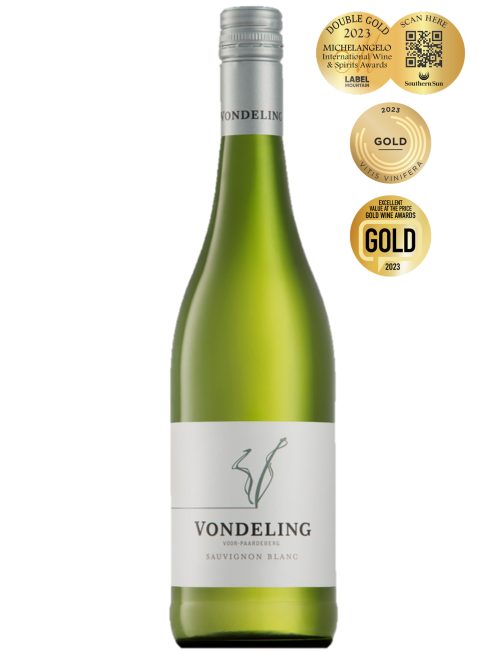
VINEYARDS
The grapes used to make this wine come from adjacent old vineyards planted in 1981 and 1984 respectively. For obvious reasons the one vineyard is called the Spice Block and the other the Long Block. Yields are rarely above 7t/ha and therefore naturally produce wines of structure and superior concentration. Our soils consist primarily of deep, well-weathered granite with moderate amounts of clay and iron. Such soils elevate the aromatics and promote finesse in the wine.
VINIFICATION
Grapes are picked in the cool, early hours of the morning then packed into a cold room for further cooling. Once the grapes are below 10°C they are gently destemmed, crushed and pressed speedily to tank. During this process, the sensitive Sauvignon Blanc juice is protected from oxidative degradation, through the judicious application of dry ice pellets. These pellets form an “insulation blanket” of carbon dioxide gas above the juice. The initial, free-run juice and press juice are managed separately, according to their character. The juice is cold settled for 48 hours before it is racked from its sediments and inoculated with pure yeast cultures. Cold fermentation at 12°C locks in freshness and ensures an intense tropical fruit bouquet. After fermentation, the wine is kept on the gross lees for 4 months. This practice adds weight and texture to the palate. TASTING NOTES & CELLARING & FOOD PAIRINGThe wine is crystal clear with a slight green edge. It displays an aromatic kaleidoscope, rich with perfumed peach, white pear, passion fruit and lime. These wonderful aromas prevail on the palate with added guava, pineapple, potpourri and nettle. The roundness of the palate is perfectly balanced by a steely mineral zest and enjoyable long finish. Enjoy chilled with fresh sourdough bread and soft cheeses or lime drizzled game fish.
Accolades 2020 Vintage: 2020 Gilbert & Gaillard International Challenge - Gold 2023 Vintage: 2023 Michelangelo- Double Gold 2023 Gold Wine Awards- Gold 2023 Vitis Vinifera- Gold Analysis pH 3.33 Total Acidity 5.8 g/l Residual Sugar 4.5 g/l Alcohol 12.78 % Download Tasting Sheet 2023 -
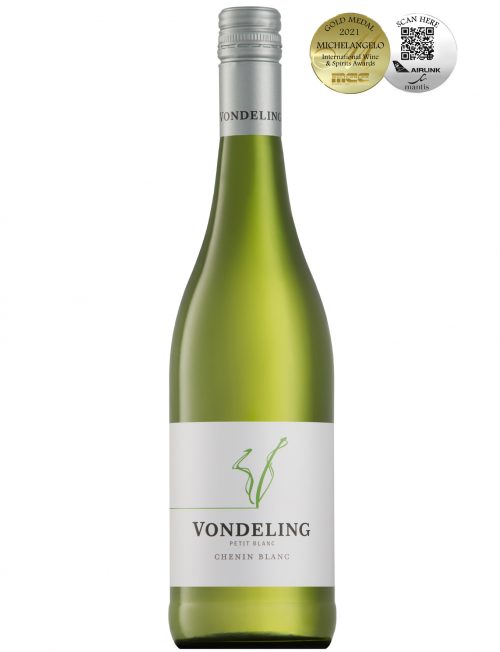 VINEYARDS Beautiful mature Chenin Blanc planted on south-facing slopes and composed exclusively of shy bearing, wellweathered granite soils. These vineyards produce a low average crop of only 9 tons per hectare, which ensures a tremendous concentration of fruit flavours on the palate. All the fruit is hand-picked on taste at optimum ripeness, ranging from 21-23ºB. VINIFICATION Our grapes are picked in the cool, early hours of the morning and processed immediately. The grapes are destemmed and chilled further before they are pressed. This short supply from vine to press ensures minimal degradation of the fruit aromas. The free-run juice and press juices are kept separate from each other and treated according to their individual character. The wines are cold fermented in small stainless-steel tanks and are 100% unwooded. This method locks in freshness and vigor, which elevates the natural aromatics. After fermentation, the wines are matured on the yeast lees to promote mouth feel and creaminess, before they are blended, stabilized, and bottled. TASTING NOTES & CELLARING & FOOD PAIRING The wine has a striking, pale lime colour. The nose has pronounced tropical aromas of guava, passion fruit, and melon with an interesting floral, potpourri twist. On the palate, you can enjoy white peach, kiwi fruit, and pink lady apple, underpinned by a delightful flinty freshness and delicate citrus finish. Full and fresh, this wine will pair well with prawn risotto, lobster, soft cheeses, and sunshine. Accolades 2023 Vintage: 2023 Gold Wine Awards -Gold 2022 Vintage: 2022 Michelangelo - Double Gold 2022 Gilbert Gaillard - Gold (87 pts) 2021 Vintage: 2021 Michelangelo - Gold 2020 Vintage: 2020 Gold Wines Awards - Gold Analysis pH 3,40 Total Acidity 5.8 g/l Residual Sugar 2.7 g/l Alcohol 12.5 % Download Tasting Sheet
VINEYARDS Beautiful mature Chenin Blanc planted on south-facing slopes and composed exclusively of shy bearing, wellweathered granite soils. These vineyards produce a low average crop of only 9 tons per hectare, which ensures a tremendous concentration of fruit flavours on the palate. All the fruit is hand-picked on taste at optimum ripeness, ranging from 21-23ºB. VINIFICATION Our grapes are picked in the cool, early hours of the morning and processed immediately. The grapes are destemmed and chilled further before they are pressed. This short supply from vine to press ensures minimal degradation of the fruit aromas. The free-run juice and press juices are kept separate from each other and treated according to their individual character. The wines are cold fermented in small stainless-steel tanks and are 100% unwooded. This method locks in freshness and vigor, which elevates the natural aromatics. After fermentation, the wines are matured on the yeast lees to promote mouth feel and creaminess, before they are blended, stabilized, and bottled. TASTING NOTES & CELLARING & FOOD PAIRING The wine has a striking, pale lime colour. The nose has pronounced tropical aromas of guava, passion fruit, and melon with an interesting floral, potpourri twist. On the palate, you can enjoy white peach, kiwi fruit, and pink lady apple, underpinned by a delightful flinty freshness and delicate citrus finish. Full and fresh, this wine will pair well with prawn risotto, lobster, soft cheeses, and sunshine. Accolades 2023 Vintage: 2023 Gold Wine Awards -Gold 2022 Vintage: 2022 Michelangelo - Double Gold 2022 Gilbert Gaillard - Gold (87 pts) 2021 Vintage: 2021 Michelangelo - Gold 2020 Vintage: 2020 Gold Wines Awards - Gold Analysis pH 3,40 Total Acidity 5.8 g/l Residual Sugar 2.7 g/l Alcohol 12.5 % Download Tasting Sheet -
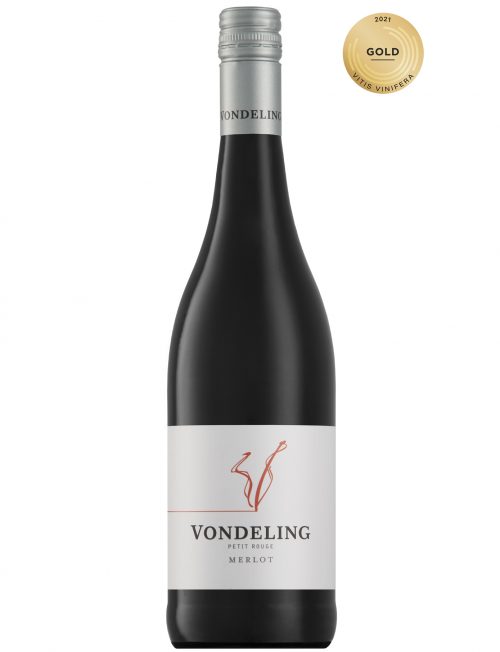 (100% Merlot) VINEYARDS The Merlot vineyard used in this wine is planted in a combination of well-weathered granite soils and beautiful “koffie klip” (shale) slopes. They are South-West facing slopes, which helps keep temperatures moderate. Optimum ripeness was at 24°B, with vibrant flavours of ripe, red fruits. Handpicking, under the watchful eye of the winemaker, ensures that only the finest fruit is delivered to the cellar. VINIFICATION The grapes are destemmed, but not crushed and whole berry fermentation at cool temperatures is practiced, to ensure a broad spectrum of bright fruit and spiciness without heavy tannin extraction. After fermentation, the wine is transferred to old 300Lt French oak barrels and the skins are pressed. Malolactic fermentation takes place in the barrel after which the wines are racked, the batches are blended, and the wine prepared to be bottled. TASTING NOTES & CELLARING & FOOD PAIRING The wine displays a bright ruby red colour. It shows a vibrant, fruitfilled aroma of sleek cherries, subtle raspberry, and soft, black pepper. The nose carries through beautifully to the palate and is nicely supported by refined tannins with a smooth finish. A dynamic wine, which can be enjoyed at many levels, but is exceptionally well pared with a traditional South African braai. Alternatively, a Sunday roast is a must. We hope you enjoy it. Accolades 2019 Vintage: 2020 Gold Wine Awards – Gold 2020 Vintage: 2021 Vitis Vinifera (Gold) 2019 Vinatge: 2020 Gold Wine Awards - Gold 2020 Vitis Vinifera Awards - Gold 2023 Platter's Guide -85 Points (Good Value) “Worth twice the price” - Michael Fridjhon Analysis pH 3.61 Total Acidity 5.7 g/l Residual Sugar 4.0 g/l Alcohol 13.72 % Download Tasting Sheet
(100% Merlot) VINEYARDS The Merlot vineyard used in this wine is planted in a combination of well-weathered granite soils and beautiful “koffie klip” (shale) slopes. They are South-West facing slopes, which helps keep temperatures moderate. Optimum ripeness was at 24°B, with vibrant flavours of ripe, red fruits. Handpicking, under the watchful eye of the winemaker, ensures that only the finest fruit is delivered to the cellar. VINIFICATION The grapes are destemmed, but not crushed and whole berry fermentation at cool temperatures is practiced, to ensure a broad spectrum of bright fruit and spiciness without heavy tannin extraction. After fermentation, the wine is transferred to old 300Lt French oak barrels and the skins are pressed. Malolactic fermentation takes place in the barrel after which the wines are racked, the batches are blended, and the wine prepared to be bottled. TASTING NOTES & CELLARING & FOOD PAIRING The wine displays a bright ruby red colour. It shows a vibrant, fruitfilled aroma of sleek cherries, subtle raspberry, and soft, black pepper. The nose carries through beautifully to the palate and is nicely supported by refined tannins with a smooth finish. A dynamic wine, which can be enjoyed at many levels, but is exceptionally well pared with a traditional South African braai. Alternatively, a Sunday roast is a must. We hope you enjoy it. Accolades 2019 Vintage: 2020 Gold Wine Awards – Gold 2020 Vintage: 2021 Vitis Vinifera (Gold) 2019 Vinatge: 2020 Gold Wine Awards - Gold 2020 Vitis Vinifera Awards - Gold 2023 Platter's Guide -85 Points (Good Value) “Worth twice the price” - Michael Fridjhon Analysis pH 3.61 Total Acidity 5.7 g/l Residual Sugar 4.0 g/l Alcohol 13.72 % Download Tasting Sheet -
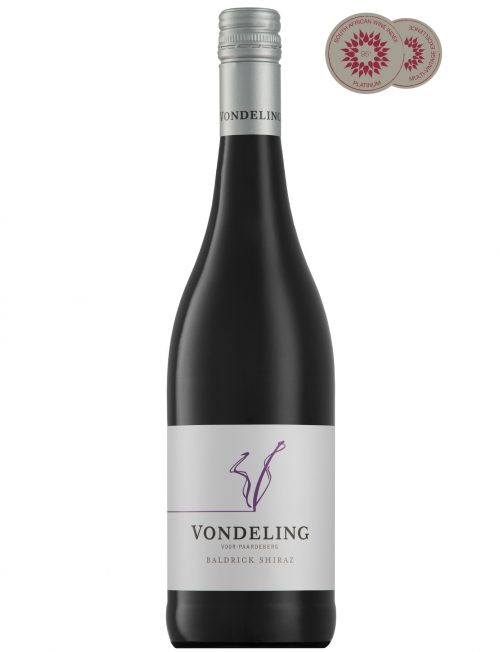 VINEYARDS For this delicious wine, we select the sites and clones which promote greater aromatics and a more accessible palate. The vineyards are planted on ancient, granite-derived soils on the south and southeast-facing slopes. Multiple clones of Shiraz are used to improve the complexity of the final wine. VINIFICATION Our grapes are hand-picked and chilled overnight before being destemmed and placed as whole berries in open-top fermenters. The berry mash is cold-soaked for 48 hours before fermenting spontaneously at 22°C. All fermentation is done by wild yeasts. During fermentation, the wine is mixed by hand and not by pump. Once fermentation is complete, the skins are pressed in a traditional basket press, and the wine is transferred to old 500 L French oak barrels. Malolactic fermentation occurs in the barrel and helps to soften and enhance the natural wine flavours. The wine spends one year in the barrel. TASTING NOTES & CELLARING & FOOD PAIRING The wine has a deep purple colour with flashes of scarlet. Ripe plum and mulberry aromas are uplifted with cherry blossom and violets. The palate is gentle and the tannins fresh but rounded. The aromatics continue into the palate with added blueberry, a hint of roasted black olives, and soft-spoken sweet spice. A versatile, medium-bodied wine, the Baldrick Shiraz will enhance many dishes and occasions. We recommend it with slow-cooked lamb, and mashed potato with caramelized onion gravy Accolades 2019 Vintage: 2021 Gold Wine Awards - Gold 2020: Vintage 2022 Platter’s Guide – 4 Stars 2021:Vintage 2023 Platter's Guide- 4 Stars Analysis pH 3.53 Total Acidity 5.4 g/l Residual Sugar 4.3 g/l Alcohol 13.57 % Download Tasting Sheet
VINEYARDS For this delicious wine, we select the sites and clones which promote greater aromatics and a more accessible palate. The vineyards are planted on ancient, granite-derived soils on the south and southeast-facing slopes. Multiple clones of Shiraz are used to improve the complexity of the final wine. VINIFICATION Our grapes are hand-picked and chilled overnight before being destemmed and placed as whole berries in open-top fermenters. The berry mash is cold-soaked for 48 hours before fermenting spontaneously at 22°C. All fermentation is done by wild yeasts. During fermentation, the wine is mixed by hand and not by pump. Once fermentation is complete, the skins are pressed in a traditional basket press, and the wine is transferred to old 500 L French oak barrels. Malolactic fermentation occurs in the barrel and helps to soften and enhance the natural wine flavours. The wine spends one year in the barrel. TASTING NOTES & CELLARING & FOOD PAIRING The wine has a deep purple colour with flashes of scarlet. Ripe plum and mulberry aromas are uplifted with cherry blossom and violets. The palate is gentle and the tannins fresh but rounded. The aromatics continue into the palate with added blueberry, a hint of roasted black olives, and soft-spoken sweet spice. A versatile, medium-bodied wine, the Baldrick Shiraz will enhance many dishes and occasions. We recommend it with slow-cooked lamb, and mashed potato with caramelized onion gravy Accolades 2019 Vintage: 2021 Gold Wine Awards - Gold 2020: Vintage 2022 Platter’s Guide – 4 Stars 2021:Vintage 2023 Platter's Guide- 4 Stars Analysis pH 3.53 Total Acidity 5.4 g/l Residual Sugar 4.3 g/l Alcohol 13.57 % Download Tasting Sheet -
 (60% Chenin Blanc, 23% Viognier, 11% Grenache Blanc & 6% Roussanne) It is named in honour of Babiana Noctiflora, a rare species of fynbos found only on the Paardeberg Mountain. It has a delicate yellow flower that releases its scent in the evenings to attract a scarce moth for pollination. The Syngrapha Circumflexa of the Noctuidae moth family is also known as an Owlet moth. THE NAME BABIANA Babiana Noctiflora belongs to the Iris family. The name Babiana is derived from the Dutch ‘baviaantje’, meaning 'little baboon', because baboons were seen preferentially eating the corms of these plants. This species has lost its habitat to vineyards and fruit orchards in the past, but at Vondeling we conserve this endangered species VINEYARDS Made predominantly from Chenin blanc, picked from a single block of old vines (planted in 1987). Their age and low yield ensure consistent quality and concentration, which is why it form the backbone of our blend. The fullness of the Chenin is tempered by the verve and high aromatics of the Grenache Blanc, Viognier, and Roussanne. VINIFICATION All grapes are hand-picked at optimum ripeness and refrigerated for 24hrs before being processed. The Chenin is whole bunch press and no Sulphur added to promote wild yeast development. The unsettled juice is then rapidly transferred to barrel for natural fermentation. Although a nerve-racking process, this method lends structure, complexity, and longevity to the wine. The Grenache Blanc, Roussanne, and Viognier are destemmed and cold fermented for 8 days on the skins before being basket pressed directly to barrel to complete fermentation. The wine undergoes full malolactic fermentation and is matured 12 months on the lees before being racked, blended, and bottled TASTING NOTES & CELLARING & FOOD PAIRING The wine has a bright yellow colour. It has a smoky and toasty nose with hints of stone fruit. The palate is full and creamy, with well-integrated acidity followed by vanilla on the aftertaste. Well use of oak allows for some subtle toasty notes on the palate. This serious and complex wine pairs well with rabbit in white wine sauce and shallots or simple, aromatic Asian dishes and rich seafood. Drink through 2027 ACCOLADES 2020 Vintage: 2021 Tim Atkin 91 Points 2022 Platter’s Guide – 4.5 Stars (91pts) 2021 Vintage: 2022 Gilbard & Gaillard-Double Gold (92Pts) 2023 Platter's Guide-4.5 Stars (93 pts) Analysis pH 3.34 Total Acidity 5.8 g/l Residual Sugar 3.6 g/l Alcohol 13.28 % Download Tasting Sheet
(60% Chenin Blanc, 23% Viognier, 11% Grenache Blanc & 6% Roussanne) It is named in honour of Babiana Noctiflora, a rare species of fynbos found only on the Paardeberg Mountain. It has a delicate yellow flower that releases its scent in the evenings to attract a scarce moth for pollination. The Syngrapha Circumflexa of the Noctuidae moth family is also known as an Owlet moth. THE NAME BABIANA Babiana Noctiflora belongs to the Iris family. The name Babiana is derived from the Dutch ‘baviaantje’, meaning 'little baboon', because baboons were seen preferentially eating the corms of these plants. This species has lost its habitat to vineyards and fruit orchards in the past, but at Vondeling we conserve this endangered species VINEYARDS Made predominantly from Chenin blanc, picked from a single block of old vines (planted in 1987). Their age and low yield ensure consistent quality and concentration, which is why it form the backbone of our blend. The fullness of the Chenin is tempered by the verve and high aromatics of the Grenache Blanc, Viognier, and Roussanne. VINIFICATION All grapes are hand-picked at optimum ripeness and refrigerated for 24hrs before being processed. The Chenin is whole bunch press and no Sulphur added to promote wild yeast development. The unsettled juice is then rapidly transferred to barrel for natural fermentation. Although a nerve-racking process, this method lends structure, complexity, and longevity to the wine. The Grenache Blanc, Roussanne, and Viognier are destemmed and cold fermented for 8 days on the skins before being basket pressed directly to barrel to complete fermentation. The wine undergoes full malolactic fermentation and is matured 12 months on the lees before being racked, blended, and bottled TASTING NOTES & CELLARING & FOOD PAIRING The wine has a bright yellow colour. It has a smoky and toasty nose with hints of stone fruit. The palate is full and creamy, with well-integrated acidity followed by vanilla on the aftertaste. Well use of oak allows for some subtle toasty notes on the palate. This serious and complex wine pairs well with rabbit in white wine sauce and shallots or simple, aromatic Asian dishes and rich seafood. Drink through 2027 ACCOLADES 2020 Vintage: 2021 Tim Atkin 91 Points 2022 Platter’s Guide – 4.5 Stars (91pts) 2021 Vintage: 2022 Gilbard & Gaillard-Double Gold (92Pts) 2023 Platter's Guide-4.5 Stars (93 pts) Analysis pH 3.34 Total Acidity 5.8 g/l Residual Sugar 3.6 g/l Alcohol 13.28 % Download Tasting Sheet -
Out of stock
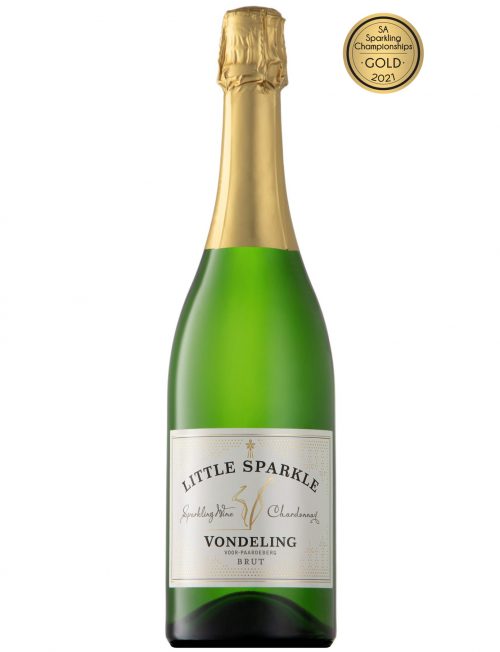
Little Sparkle
Inspired by our pioneering, limited release Methode Ancestral, our Little Sparkle is a fresh and vibrant offering for every occasion. This endearing wine will wash away the mundane and bring out the fabulous in you. Work on this project began several years ago and was born from the desire to make a premium Sparkling Wine affordable to ALL our loyal customers and wedding guests. We knew we had excellent Chardonnay, well suited to the production of premium sparkling wine but felt that the Rurale, our Methode Ancestral, was perhaps out of reach for some. We began by experimenting with different fermentation techniques that would offer you complexity without bottle fermentation and ageing. To put it simply we had to achieve this in the tank and then by using cutting edge new technology and equipment we were able to bottle the wine under high pressure and add that effervescent sparkle we love so much. VINIFICATION There is no doubt that great wine is made in the vineyard. At Vondeling we are blessed with a healthy assortment of soils, slopes and the climatic conditions that allow our grapes to ripen perfectly. We only work with grapes we farm ourselves and are therefore certain of their virility. The grapes for this wine originate from our steeper, South-facing slopes, which are naturally cooler. This helps to preserve the grape’s natural acidity, ensuring freshness and vibrancy. The grapes are picked during the early hours of the morning and crushed as whole bunches to limit oxidation and phenolic extraction. Keeping the colour bright and the aromas intact. Once pressed, the juice is allowed to settle in stainless steel tanks for 48hrs before the clear juice is racked and inoculated with a specifically neutral yeast, which will not create any overly tropical aromas. This is essential in creating a base wine suitable for sparkling wine production. Should there be too many overtly fruity aromas, the wine will be less refreshing and the effect of the bubbles less discreet. Fermentation encouraged to take place vigorously and at a warm temperature to promote mouthfeel and to dimmish fruity aromas. Fermentation takes approximately two weeks, after which the wine remains on the yeast lees for a minimum of 7months. During this time, through a process known as autolysis, the yeast cell walls disintegrate and impart a creaminess to the wine. Storage conditions are kept cool to encourage precipitation of some of the natural acidity and to block any secondary malo-lactic fermentation. The wine is now ready for a final filtration to clarify the wine and ensure its sterility before being bottled with an in-bottle pressure 5,4 bars. TASTING NOTES & CELLARING & FOOD PAIRING The wine is clear and vibrant with a hint of pale yellow on the fringe. Tiny chains of sparkling bubbles rise to the surface like miniature strings of pearls. On the nose, you’ll experience a mild citrus and brioche bouquet which is typical of premium sparkling Chardonnay. The Little Sparkle has a full palate with abundant bubbles and a smooth, soft, creamy finish Elegant and well-rounded, enjoy this wine wherever there is good company and great food. We recommend this wine with smoked salmon and cucumber sandwiches or delicious West Coast oysters. Accolades 2022 Gold Wine Awards - Gold 2021 SA Sparkling Wine Championship - Gold Analysis pH 3.3 Total Acidity 7.3 g/l Residual Sugar 11.7 g/l Alcohol 12.9 % Download Tasting Sheet -
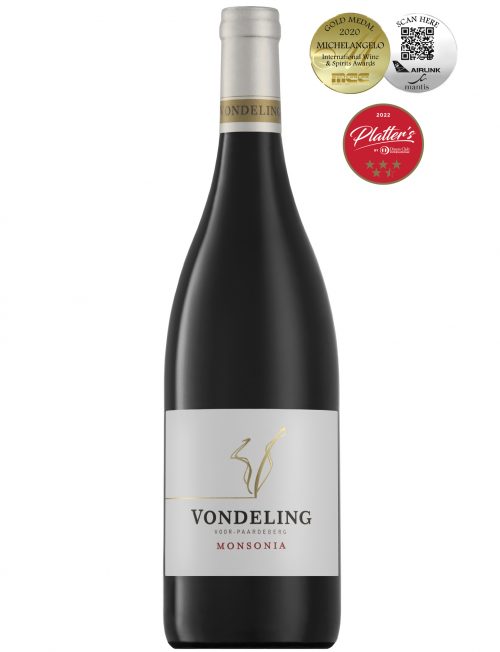 (Shiraz 60%, Mourvédre 23%, Carignan 10% & Grenache Noir 7%) Vondeling Monsonia is named after Monsonia Speciosa, a very rare species of fynbos (vegetation type occurring in the Western Cape region of South Africa) found in the Paardeberg mountain, the home of Vondeling wines. THE NAME MONSONIA The flower was named after Lady Anne Monson, the great-grandchild of King Charles II. Controversially, her first marriage was dissolved, due to the birth of an illegitimate child but she soon remarried Colonel George Monson of the Indian Military. She was known as a “remarkable lady botanist” and was instrumental in translating Linnaeus’s famous “Philosophia Botanica”. On her way to Calcutta, she visited the Cape of Good Hope and accompanied seasoned collector of South African plants, Carl Peter Thunberg, on several expeditions around the Cape. In 1774, he named the Monsonia species of plants after her. VINEYARDS The Shiraz vines grow in ancient, well-weathered granite soils on southeast-facing slopes – ideal for our warm South African climate. In total, six clones of Shiraz can be found on the farm and only the best performing clones go into the final blend. Typically, each clone contributes different characteristics to the wine and the different blocks are picked at varying degrees of ripeness, best suited to their character. The Mourvedre, Carignan, and Grenache are best adapted to hot sun and are grown as bush vines on North East-facing slopes. Highly selective hand-picking guarantees that only the best fruit arrives at the winery. VINIFICATION After being chilled overnight, bunches are partially destemmed, but not crushed, and whole berry fermentation takes place in open-top fermentation tanks. An initial two-day period of cold soaking is applied before wild yeast fermentation is allowed to commence. During fermentation, hand plunging, commonly known as "punch downs" is the method of mixing and extraction. After fermentation, the wine is pressed in a traditional boutique-size basket press. All wine is then transferred directly to barrel where malolactic fermentation takes place. Only large format French oak barrels are used, with about one-third new and the rest 2nd and 3rd fill. The wine is allowed to mature for 16 months before a final barrel selection, blending and bottling takes place TASTING NOTES & CELLARING & FOOD PAIRING Vibrant and clear charcoal red with beautifully viscous legs clinging to the glass. Each grape component vies for attention in this kaleidoscopic bouquet. Sweet Lillies and rose-petal Turkish delight from the Grenache. Plush black currant and blueberries from the Carignan. All wrapped in a velvety blanket of red berries and soft spice from the Shiraz. A smooth, velvety palate devoid of harsh or grippy tannin. Red cherry candy and sweet plumb at the fore with a soft plush center and subtle spice with roasted coconut at the end. Well paired with a mature steak, barbequed over a hotbed of coals and served with sauteed baby mushrooms, or try a hearty, slow-cooked pork belly with root vegetables and tomatoes. Accolades 2016 Vinatge:
(Shiraz 60%, Mourvédre 23%, Carignan 10% & Grenache Noir 7%) Vondeling Monsonia is named after Monsonia Speciosa, a very rare species of fynbos (vegetation type occurring in the Western Cape region of South Africa) found in the Paardeberg mountain, the home of Vondeling wines. THE NAME MONSONIA The flower was named after Lady Anne Monson, the great-grandchild of King Charles II. Controversially, her first marriage was dissolved, due to the birth of an illegitimate child but she soon remarried Colonel George Monson of the Indian Military. She was known as a “remarkable lady botanist” and was instrumental in translating Linnaeus’s famous “Philosophia Botanica”. On her way to Calcutta, she visited the Cape of Good Hope and accompanied seasoned collector of South African plants, Carl Peter Thunberg, on several expeditions around the Cape. In 1774, he named the Monsonia species of plants after her. VINEYARDS The Shiraz vines grow in ancient, well-weathered granite soils on southeast-facing slopes – ideal for our warm South African climate. In total, six clones of Shiraz can be found on the farm and only the best performing clones go into the final blend. Typically, each clone contributes different characteristics to the wine and the different blocks are picked at varying degrees of ripeness, best suited to their character. The Mourvedre, Carignan, and Grenache are best adapted to hot sun and are grown as bush vines on North East-facing slopes. Highly selective hand-picking guarantees that only the best fruit arrives at the winery. VINIFICATION After being chilled overnight, bunches are partially destemmed, but not crushed, and whole berry fermentation takes place in open-top fermentation tanks. An initial two-day period of cold soaking is applied before wild yeast fermentation is allowed to commence. During fermentation, hand plunging, commonly known as "punch downs" is the method of mixing and extraction. After fermentation, the wine is pressed in a traditional boutique-size basket press. All wine is then transferred directly to barrel where malolactic fermentation takes place. Only large format French oak barrels are used, with about one-third new and the rest 2nd and 3rd fill. The wine is allowed to mature for 16 months before a final barrel selection, blending and bottling takes place TASTING NOTES & CELLARING & FOOD PAIRING Vibrant and clear charcoal red with beautifully viscous legs clinging to the glass. Each grape component vies for attention in this kaleidoscopic bouquet. Sweet Lillies and rose-petal Turkish delight from the Grenache. Plush black currant and blueberries from the Carignan. All wrapped in a velvety blanket of red berries and soft spice from the Shiraz. A smooth, velvety palate devoid of harsh or grippy tannin. Red cherry candy and sweet plumb at the fore with a soft plush center and subtle spice with roasted coconut at the end. Well paired with a mature steak, barbequed over a hotbed of coals and served with sauteed baby mushrooms, or try a hearty, slow-cooked pork belly with root vegetables and tomatoes. Accolades 2016 Vinatge:2020 Platter’s Guide – 4.5 Stars 2019 Michelangelo – Gold 2019 Winemag - 93pts
2018 Vintage:2021 Platter’s Guide – 4.5 Stars / 94 Points 2020 Michelangelo - Gold 2022 Tim Atkin 90 Pts 2022 Michelangelo Awards - Gold 2023 Platter’s Guide 4,5 Stars (92 Pts)
2019 Vintage: 2024 Platter’s Guide 4.5 Stars (92 Pts) Analysis pH 3.50 Total Acidity 5.3 g/l Residual Sugar 3.3 g/l Alcohol 13.72 % Download Tasting Sheet -
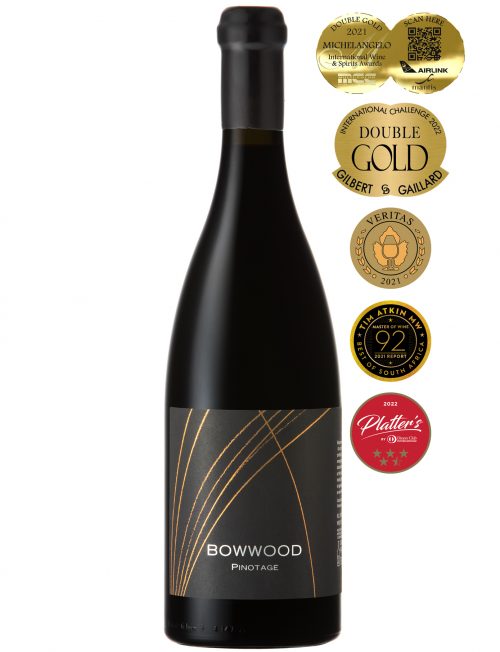 (100% Pinotage) VINEYARDS Bowwood Pinotage is made from a small, single vineyard, planted in clay-rich gravel soils in 1998. The vineyard is shy bearing with poor vigour, which ensures tiny berries with hugely concentrated flavour. A North-South row orientation exposes the grapes to plenty of gentle morning and late afternoon sunshine, perfect for intense colour and aromatic development. VINIFICATION The grapes are hand-picked in early February with a ripeness of 25 Balling. Each bunch is pre-chilled before being destemmed and berry sorted. The berries are not crushed but are fermented whole. This allows for a gradual extraction of tannins and colour, which promotes finesse, balance and longevity. The berries are fermented in open-top fermenters, which provide easy access for the winemaker to assess and manipulate the fermentation. The wine is punched down regularly for 8 days and then basket pressed directly to new and second fill, 300L American oak barrels. Malolactic fermentation takes place in the barrel, which promotes harmony and seamless integration of the oak flavours. The wine is further matured on the yeast and malolactic lees for 18 months. At this point, the finest 12 barrels are selected, blended and returned to barrel for an additional 6 months. Finally, the wine is kept for 4 months in a stainless-steel tank to promote stability and clarification, before it is bottled and laid to rest for a full year before it is released. FURTHER REMARKS Bowwood Pinotage is made to rival the best wines in the world and will benefit greatly from additional cellaring. This is only the six vintage. TASTING NOTES & CELLARING & FOOD PAIRING Opaque in colour with dark hues of purple and red, it delivers an intense black cherry and plum bouquet interlaced with sweet cloves and vanillarich oak. Bold fruit and pungent spice aromatics persist on the palate with undertones of roasted almonds and cigar smoke. The palate is broad and rich with soft acidity and abundant, fine tannin. A luxurious, full-flavored, and modern wine. Accolades 2020 Vintage: 2023 Michelangelo- Double Gold 2023 Veritas-Double Gold 2024 Platter’s Guide- 4.5 Stars (91 Pts) 2019 Vintage: 2022 ABSA TOP 10 Winner 2022 Veritas- Double Gold Vintage 2018: 2021 Michelangelo – Double Gold 2021 Veritas – Gold 2022 Platter’s Guide – 4.5 Stars (94pts) 2022 Gilbert & Gaillard -Double Gold (92pts) Analysis pH 3.52 Total Acidity 5.8 g/l Residual Sugar 3.5 g/l Alcohol 14.48 % Download Tasting Sheet
(100% Pinotage) VINEYARDS Bowwood Pinotage is made from a small, single vineyard, planted in clay-rich gravel soils in 1998. The vineyard is shy bearing with poor vigour, which ensures tiny berries with hugely concentrated flavour. A North-South row orientation exposes the grapes to plenty of gentle morning and late afternoon sunshine, perfect for intense colour and aromatic development. VINIFICATION The grapes are hand-picked in early February with a ripeness of 25 Balling. Each bunch is pre-chilled before being destemmed and berry sorted. The berries are not crushed but are fermented whole. This allows for a gradual extraction of tannins and colour, which promotes finesse, balance and longevity. The berries are fermented in open-top fermenters, which provide easy access for the winemaker to assess and manipulate the fermentation. The wine is punched down regularly for 8 days and then basket pressed directly to new and second fill, 300L American oak barrels. Malolactic fermentation takes place in the barrel, which promotes harmony and seamless integration of the oak flavours. The wine is further matured on the yeast and malolactic lees for 18 months. At this point, the finest 12 barrels are selected, blended and returned to barrel for an additional 6 months. Finally, the wine is kept for 4 months in a stainless-steel tank to promote stability and clarification, before it is bottled and laid to rest for a full year before it is released. FURTHER REMARKS Bowwood Pinotage is made to rival the best wines in the world and will benefit greatly from additional cellaring. This is only the six vintage. TASTING NOTES & CELLARING & FOOD PAIRING Opaque in colour with dark hues of purple and red, it delivers an intense black cherry and plum bouquet interlaced with sweet cloves and vanillarich oak. Bold fruit and pungent spice aromatics persist on the palate with undertones of roasted almonds and cigar smoke. The palate is broad and rich with soft acidity and abundant, fine tannin. A luxurious, full-flavored, and modern wine. Accolades 2020 Vintage: 2023 Michelangelo- Double Gold 2023 Veritas-Double Gold 2024 Platter’s Guide- 4.5 Stars (91 Pts) 2019 Vintage: 2022 ABSA TOP 10 Winner 2022 Veritas- Double Gold Vintage 2018: 2021 Michelangelo – Double Gold 2021 Veritas – Gold 2022 Platter’s Guide – 4.5 Stars (94pts) 2022 Gilbert & Gaillard -Double Gold (92pts) Analysis pH 3.52 Total Acidity 5.8 g/l Residual Sugar 3.5 g/l Alcohol 14.48 % Download Tasting Sheet -
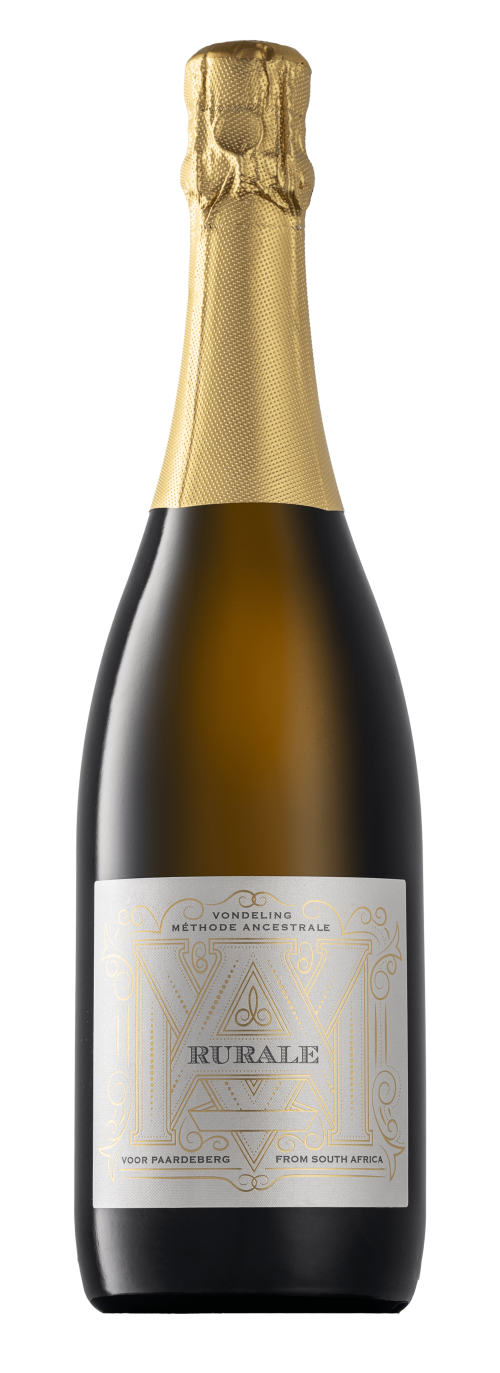 (100% Chardonnay) VINEYARDS Vondeling Rurale is comprised of 100% Chardonnay . The Chardonnay grapes originate from a single block, located on a south-west facing slope on the decomposed granite soils of the Paardeberg Mountain. Unlike Mèthode Cap Classique, Mèthode Ancestrale grapes are harvested with a potential alcohol of 12% (rather than 9%). This promotes a fuller, more rounded pallet with superior fruit expression without compromising on natural vibrancy and freshness. VINIFICATION Natural fermentation begins in a stainless-steel tank and when only a small, but critical amount of sugar remains, the fermenting wine is bottled and capped. Bottling must be done at the precise moment when there is enough remaining sugar to create a healthy, vibrant mousse, but not so much as to cause the bottles to explode. This single, continuous fermentation, using fruit which is approximately three weeks riper than the base wine used to make Mèthode Cap Classique, is what makes Mèthode Ancestrale unique. The wine is matured on its lees for 3 years before riddling and disgorging. Autolysis of the yeast cells increases richness, palate weight and creaminess to the wine. After being hand riddled over a one-month period, it is disgorged and topped using our flagship white blend, Babiana from the 2013 vintage, as an alternative to liqueur d’expedition. The name Rurale is the original name for what was later recognized by the French A.O.C as Mèthode Ancestrale. We love the implication that this is an uncomplicated, yet pure expression of both the grape and its origins. Rurale was the first recognized Mèthode Ancestrale to be produced in South Africa and remains the leader in this category. Vondeling was instrumental in drafting the technical description, which allowed this new category to be recognized in 2014. It is a highly labour-intensive way to produce sparkling wine, and for this reason, only 2750 bottles were produced. All grapes are grown and vinified on Vondeling Farm and Cellar. TASTING NOTES & CELLARING & FOOD PAIRING The wine displays a pale straw colour typical of bubbly that has enjoyed the benefits of extended lees maturation. Tiny, pearl-string bubbles and fine mousse abound. Beautiful aromas of lavender honey, lime, crisp apple with freshly baked pastry and toasted almonds on the nose. The palate is bright and zippy with vibrant acidity and a soft, creamy mouthfeel. Fresh apple appears again along with pears, confected lemon and a long, rich, lingering after taste. Rurale can be paired with smoked salmon, fennel roasted trout or fresh oysters with a squeeze of lemon, salt, and pepper. Accolades: 2018 Vintage: 2021 SA Sparkling Wine Championships – Double Gold 2021 Michelangelo- Gold 2022 Platter Wine Guide 2020 – 4,5 stars (93pts) Analysis: pH 3.42 Total Acidity 7.2 g/l Residual Sugar 1.4 g/l Alcohol 11.36 % Download Tasting Sheet
(100% Chardonnay) VINEYARDS Vondeling Rurale is comprised of 100% Chardonnay . The Chardonnay grapes originate from a single block, located on a south-west facing slope on the decomposed granite soils of the Paardeberg Mountain. Unlike Mèthode Cap Classique, Mèthode Ancestrale grapes are harvested with a potential alcohol of 12% (rather than 9%). This promotes a fuller, more rounded pallet with superior fruit expression without compromising on natural vibrancy and freshness. VINIFICATION Natural fermentation begins in a stainless-steel tank and when only a small, but critical amount of sugar remains, the fermenting wine is bottled and capped. Bottling must be done at the precise moment when there is enough remaining sugar to create a healthy, vibrant mousse, but not so much as to cause the bottles to explode. This single, continuous fermentation, using fruit which is approximately three weeks riper than the base wine used to make Mèthode Cap Classique, is what makes Mèthode Ancestrale unique. The wine is matured on its lees for 3 years before riddling and disgorging. Autolysis of the yeast cells increases richness, palate weight and creaminess to the wine. After being hand riddled over a one-month period, it is disgorged and topped using our flagship white blend, Babiana from the 2013 vintage, as an alternative to liqueur d’expedition. The name Rurale is the original name for what was later recognized by the French A.O.C as Mèthode Ancestrale. We love the implication that this is an uncomplicated, yet pure expression of both the grape and its origins. Rurale was the first recognized Mèthode Ancestrale to be produced in South Africa and remains the leader in this category. Vondeling was instrumental in drafting the technical description, which allowed this new category to be recognized in 2014. It is a highly labour-intensive way to produce sparkling wine, and for this reason, only 2750 bottles were produced. All grapes are grown and vinified on Vondeling Farm and Cellar. TASTING NOTES & CELLARING & FOOD PAIRING The wine displays a pale straw colour typical of bubbly that has enjoyed the benefits of extended lees maturation. Tiny, pearl-string bubbles and fine mousse abound. Beautiful aromas of lavender honey, lime, crisp apple with freshly baked pastry and toasted almonds on the nose. The palate is bright and zippy with vibrant acidity and a soft, creamy mouthfeel. Fresh apple appears again along with pears, confected lemon and a long, rich, lingering after taste. Rurale can be paired with smoked salmon, fennel roasted trout or fresh oysters with a squeeze of lemon, salt, and pepper. Accolades: 2018 Vintage: 2021 SA Sparkling Wine Championships – Double Gold 2021 Michelangelo- Gold 2022 Platter Wine Guide 2020 – 4,5 stars (93pts) Analysis: pH 3.42 Total Acidity 7.2 g/l Residual Sugar 1.4 g/l Alcohol 11.36 % Download Tasting Sheet -
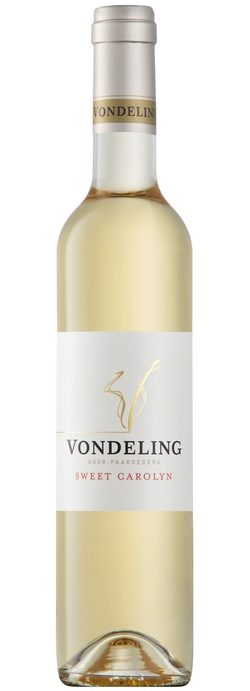 (100% Muscat de Frontignan) VINEYARDS This wine is made from a single vineyard of Muscat d’Frontignan. The winemaking begins in the vineyard. When the acidity and sugar are in perfect harmony, the stem of each bunch is individually crimped to isolate the bunch from the vine. The crimping process stops the supply of water to the bunch, causing the berries to desiccate on the vine. Crimping is done before the grapes are 100% ripe and still high in natural acidity. The crimping process concentrates the sugar and the acidity of the berries and takes up to two weeks. The grapes are naturally protected from the sun by the vine canopy and air movement across the berries stops moulds and fungi from forming while they are drying. Finally, the fruit is ready for picking. VINIFICATION The dried grapes are hand-picked and chilled overnight. They are then destemmed, but not crushed, directly to open top fermenters. Here the berries are fermented much like a red wine, with periodic punch downs, to extract all the syrupy juice from inside. This method adds structure to the wine and the light tannins help to preserve fruity freshness. After approximately one week on the skins, they are pressed, and fermentation is completed in tank. Fermentation stops naturally when the combination of high acidity, increasing alcohol and concentrated sugar finally becomes too inhibitory for the yeast. The wine is aged for 11 months on the gross lees before it is bottled. TASTING NOTES & CELLARING & FOOD PAIRING The wine displays a golden to light amber colour. It has a perfumed nose of bright pineapple, ripe apricot, honeyed marmalade and seductive rose petal. These heady aromas are supported by orange blossom, jasmine and wild rosemary. The nose carries through to the taste, where the mouth-watering sweetness is cut by a tangy acidity, which ensures a persistent and refreshing finish. This is a naturally fermented and unfortified wine, and allows for many delightful treats, which may incl. savoury duck liver pate, sweet spice-laced puddings and traditional soft cheeses. Serve chilled and don’t wait for dessert. Accolades 2022 Platter’s Guide – 4.5 Stars
(100% Muscat de Frontignan) VINEYARDS This wine is made from a single vineyard of Muscat d’Frontignan. The winemaking begins in the vineyard. When the acidity and sugar are in perfect harmony, the stem of each bunch is individually crimped to isolate the bunch from the vine. The crimping process stops the supply of water to the bunch, causing the berries to desiccate on the vine. Crimping is done before the grapes are 100% ripe and still high in natural acidity. The crimping process concentrates the sugar and the acidity of the berries and takes up to two weeks. The grapes are naturally protected from the sun by the vine canopy and air movement across the berries stops moulds and fungi from forming while they are drying. Finally, the fruit is ready for picking. VINIFICATION The dried grapes are hand-picked and chilled overnight. They are then destemmed, but not crushed, directly to open top fermenters. Here the berries are fermented much like a red wine, with periodic punch downs, to extract all the syrupy juice from inside. This method adds structure to the wine and the light tannins help to preserve fruity freshness. After approximately one week on the skins, they are pressed, and fermentation is completed in tank. Fermentation stops naturally when the combination of high acidity, increasing alcohol and concentrated sugar finally becomes too inhibitory for the yeast. The wine is aged for 11 months on the gross lees before it is bottled. TASTING NOTES & CELLARING & FOOD PAIRING The wine displays a golden to light amber colour. It has a perfumed nose of bright pineapple, ripe apricot, honeyed marmalade and seductive rose petal. These heady aromas are supported by orange blossom, jasmine and wild rosemary. The nose carries through to the taste, where the mouth-watering sweetness is cut by a tangy acidity, which ensures a persistent and refreshing finish. This is a naturally fermented and unfortified wine, and allows for many delightful treats, which may incl. savoury duck liver pate, sweet spice-laced puddings and traditional soft cheeses. Serve chilled and don’t wait for dessert. Accolades 2022 Platter’s Guide – 4.5 Stars2017 Vintage:
2020 Platter’s Guide – 4.5 Stars 2018 James Suckling SA Report 90 points
Analysis pH 3.38 Total Acidity 6.4 g/l Residual Sugar 177.6 g/l Alcohol 12.38 % Download Tasting Sheet -
Out of stock
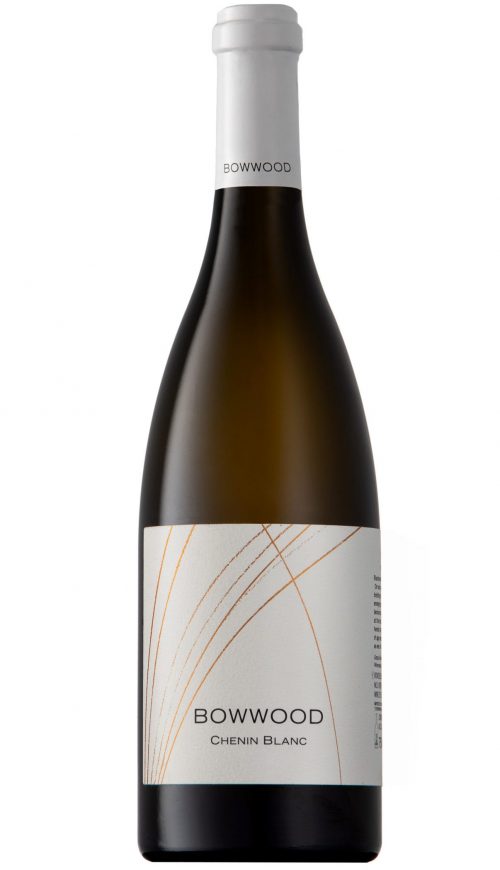 (100% Chenin Blanc) VINEYARDS This wine is made from a single, site-specific vineyard, planted in ancient granitic soils. It’s the highest vineyard on Vondeling and offers magnificent views of our beautiful Voor Paardeberg region. The elevation of the vines, as well as the steepness of the slope and a Southfacing aspect, ensure that this is our coolest location. The vineyard has poor vigour and the vines are shy yielding. This ensures tiny berries with concentrated flavour and vibrant acidity. VINIFICATION The grapes are hand-picked in mid-February with a ripeness of 23.5 Balling. Each bunch is pre-chilled before being whole bunch pressed. The juice remains unsettled and is transferred immediately to French Oak barrels for fermentation. At no stage is yeast or acid added and the “Dirty juice” acts as a nutrient source for the indigenous yeast. It also imparts considerable structure and gives the wine its golden appearance. During the wine’s winter maturation on the gross lees, it normally undergoes a high degree of Malolactic fermentation. This process softens the wine and ensures the harmonious integration of the oak. After winter, the finest barrels are selected, racked and returned for an additional 6 months in barrel. In January, the barrels are screened a second time and the chosen few are prepared for bottling. Due to the fullness and structure of this wine, we insist on a minimum of 9 months rest in bottle before release for purchase. FURTHER REMARKS The Bowwood motto is to produce singular, sight-specific wines that exemplify not only the best examples of their type in South Africa but of those of the world. Special attention is given to how the wine will mature over time and we highly recommend additional cellaring to release the wine’s full potential. TASTING NOTES & CELLARING & FOOD PAIRING Light dances through this wine’s bright, gold leaf colour. It captures, bends and reflects with the same hypnotic rhythm as a fresh mountain stream in the late light of summer. A cerebral experience, the wine is initially timid on the nose, but soon explodes kaleidoscopically in the back of the brain. Delicate apricot, yellow pear and cut straw aromas are fabulously supported by denser greengage, crushed cumin, raw almond and wild celery. The palate is luxurious and full, with a chalky dryness and vast savoury spectrum. Its mineral freshness showcases honeyed tangerine, roasted corn, ripe quince and sweet cashew. Savoury notes include freshly minced bay leaf and fine ground nutmeg. We recommend this wine be paired with nut crusted swordfish and saffron infused risotto or crispy, shredded duck on spring onion pancakes with tomato salsa. Accolades 2019 Vintage: 2022 Platter's Guide - 4.5 Stars 2022 Wine Cellar - 93pts 2022 Gilbert Gaillard - Double Gold (90pts) 2021 Winemag - 87pts 2021 Tim Atkin - 90pts 2021 Platter's Guide - 4.5 Stars 2020 Winemag 93 Points Analysis pH 3.6 Total Acidity 5.3 g/l Residual Sugar 4.4 g/l Alcohol 13.8 % Download Tasting Sheet
(100% Chenin Blanc) VINEYARDS This wine is made from a single, site-specific vineyard, planted in ancient granitic soils. It’s the highest vineyard on Vondeling and offers magnificent views of our beautiful Voor Paardeberg region. The elevation of the vines, as well as the steepness of the slope and a Southfacing aspect, ensure that this is our coolest location. The vineyard has poor vigour and the vines are shy yielding. This ensures tiny berries with concentrated flavour and vibrant acidity. VINIFICATION The grapes are hand-picked in mid-February with a ripeness of 23.5 Balling. Each bunch is pre-chilled before being whole bunch pressed. The juice remains unsettled and is transferred immediately to French Oak barrels for fermentation. At no stage is yeast or acid added and the “Dirty juice” acts as a nutrient source for the indigenous yeast. It also imparts considerable structure and gives the wine its golden appearance. During the wine’s winter maturation on the gross lees, it normally undergoes a high degree of Malolactic fermentation. This process softens the wine and ensures the harmonious integration of the oak. After winter, the finest barrels are selected, racked and returned for an additional 6 months in barrel. In January, the barrels are screened a second time and the chosen few are prepared for bottling. Due to the fullness and structure of this wine, we insist on a minimum of 9 months rest in bottle before release for purchase. FURTHER REMARKS The Bowwood motto is to produce singular, sight-specific wines that exemplify not only the best examples of their type in South Africa but of those of the world. Special attention is given to how the wine will mature over time and we highly recommend additional cellaring to release the wine’s full potential. TASTING NOTES & CELLARING & FOOD PAIRING Light dances through this wine’s bright, gold leaf colour. It captures, bends and reflects with the same hypnotic rhythm as a fresh mountain stream in the late light of summer. A cerebral experience, the wine is initially timid on the nose, but soon explodes kaleidoscopically in the back of the brain. Delicate apricot, yellow pear and cut straw aromas are fabulously supported by denser greengage, crushed cumin, raw almond and wild celery. The palate is luxurious and full, with a chalky dryness and vast savoury spectrum. Its mineral freshness showcases honeyed tangerine, roasted corn, ripe quince and sweet cashew. Savoury notes include freshly minced bay leaf and fine ground nutmeg. We recommend this wine be paired with nut crusted swordfish and saffron infused risotto or crispy, shredded duck on spring onion pancakes with tomato salsa. Accolades 2019 Vintage: 2022 Platter's Guide - 4.5 Stars 2022 Wine Cellar - 93pts 2022 Gilbert Gaillard - Double Gold (90pts) 2021 Winemag - 87pts 2021 Tim Atkin - 90pts 2021 Platter's Guide - 4.5 Stars 2020 Winemag 93 Points Analysis pH 3.6 Total Acidity 5.3 g/l Residual Sugar 4.4 g/l Alcohol 13.8 % Download Tasting Sheet -
 (Cabernet Sauvignon 64% ,Merlot 21%, Cabernet Franc 15%) LIMITED RELEASE Philosophie is a brave endeavor in which we attempt to marry the mind, the heart, and the soil as we celebrate the diversity of Vondeling. THE STORY BEHIND THE LABEL Each year a celebrated artist is recruited to illustrate a rare Paardeberg flower in the medium of their choice. This unique artistic rendition of the chosen flower serves as the flag bearer, not only of the vintage, but also of the unique terroir in which the grapes are grown. These special labels are placed on a curated selection of Vondeling’s finest barrels to create a series of collectable, rare wines. Each bottle is individually numbered within the series. This year, we’ve chosen Monsonia speciosa, an endangered member of the geranium family, which grows in the Paardeberg. Its attractive pink and white petals have earned it, its common name the Butterfly or Umbrella Flower. This year’s beautiful image was done in oil paint, by the renowned Wiltshire-based artist, Emma Haggas – hereby adding emotion to place. VINEYARDS On Vondeling, in a handful of site-specific vineyards, we employ the very finest viticultural and scientific methods to explore the limits of quality grape production. Each vineyard is carefully assessed at the end of the growing season and attentively pruned during the winter months. At bud burst, any shoots which develop poorly are immediately removed. This ensures that the remaining canes are robust with plenty of energy to ensure fertile flowers and uniform berry set. As the grapes develop, only the best bunch per cane is selected and the rest are dropped to the ground. This lowers the load on the vine, thereby removing any stress in the plant and allowing perfect flavour and tannin development. It also diminishes any need for irrigation and helps preserve the grape’s natural acidity. VINIFICATION Once deemed to have reached optimal ripeness the grapes are hand- picked and refrigerated for 24hrs. The bunches are gently destemmed, but the berries are kept intact for individual berry sorting during which any green material and unripe berries are removed. The berries are not pumped, but ferried, via conveyor to open-top fermenters. This reduces the amount of juice exposed to degradation by oxygen. Cold soaking is done at 6 ˚C for a period of 3 days. Cold soaking is a process which facilitates partial degradation of the grape cell wall, to gently extract the flavours and aromatics situated below the surface of the skin. Subtle tannin extraction protects these delicate flavours and promotes colour stability. As the berries slowly come to room temperature, spontaneous fermentation begins due to the presence of natural, ambient yeast. This natural fermentation by multiple yeast strains, is preferable, as it furthers the regional expression of the wine while promoting complexity and character. A cool fermentation temperature slows the rate of fermentation and affords our winemaker adequate time to assess and manipulate the character of the wine, thus unlocking its full potential. Full extraction is ensured by regular punch downs during a two-week ferment. The skins are further macerated post-fermentation for a week before they’re pressed in a traditional basket press. From the press, the wine moves to 300L French Oak barrels for malolactic fermentation. This slow bacterial degradation of the wine’s harsher acidity has the welcome side effect of meshing the oak and natural fruit flavours into a seamless package. Two-thirds of the barrels are new. The wine remains on its yeast and malolactic lees for 14 months before the best 10 barrels are selected. These barrels are blended and returned for an additional 8 months of maturation. Of these 10 barrels only 5 are selected for the final blend. The wine is bottled after 3 months in tank and bottle matured for at least two years before release. TASTING NOTES & CELLARING & FOOD PAIRING The colour is a near-opaque charcoal red with a dense, scarlet hue. The nose has a superb sense of plush black current, wonderfully restrained and balanced by a hint of graphite. At the same time, the delicate floral notes of the Cabernet Franc are seamlessly infused with notes of sweet raspberry, uplifting aniseed and a hint of pencil shavings. The palate has a dense, weighted presence with a persistent finish. The tannins of this powerful wine are quite precise and balance the abundant ripe berry flavours beautifully. Bright notes of cinnamon and vanilla flow through the berry melange and are supported by seamless oak. This wine’s complex character lends itself to richer cuts of meat and dishes redolent with layers of umami-laden flavour. The likes of pan-seared duck, slow-roasted beef and venison goulash are all excellent counterparts, as are posh burgers with all the trimmings and saucy Tournedos Rossini. Accolades 2016 Vintage: 2022 Platter Guide - 4.5 Stars(94 Points) 2017 Vintage: 2023 Platter Guide - 5 Stars (96 Points) 2019 Vintage: 2024 Platter Guide -5 Stars(97 Points) & Category winner (Cape Bordeux Blend) Analysis pH 3.73 Total Acidity 5.5 g/l Residual Sugar 3.7 g/l Alcohol 14.64 % Download tasting notes
(Cabernet Sauvignon 64% ,Merlot 21%, Cabernet Franc 15%) LIMITED RELEASE Philosophie is a brave endeavor in which we attempt to marry the mind, the heart, and the soil as we celebrate the diversity of Vondeling. THE STORY BEHIND THE LABEL Each year a celebrated artist is recruited to illustrate a rare Paardeberg flower in the medium of their choice. This unique artistic rendition of the chosen flower serves as the flag bearer, not only of the vintage, but also of the unique terroir in which the grapes are grown. These special labels are placed on a curated selection of Vondeling’s finest barrels to create a series of collectable, rare wines. Each bottle is individually numbered within the series. This year, we’ve chosen Monsonia speciosa, an endangered member of the geranium family, which grows in the Paardeberg. Its attractive pink and white petals have earned it, its common name the Butterfly or Umbrella Flower. This year’s beautiful image was done in oil paint, by the renowned Wiltshire-based artist, Emma Haggas – hereby adding emotion to place. VINEYARDS On Vondeling, in a handful of site-specific vineyards, we employ the very finest viticultural and scientific methods to explore the limits of quality grape production. Each vineyard is carefully assessed at the end of the growing season and attentively pruned during the winter months. At bud burst, any shoots which develop poorly are immediately removed. This ensures that the remaining canes are robust with plenty of energy to ensure fertile flowers and uniform berry set. As the grapes develop, only the best bunch per cane is selected and the rest are dropped to the ground. This lowers the load on the vine, thereby removing any stress in the plant and allowing perfect flavour and tannin development. It also diminishes any need for irrigation and helps preserve the grape’s natural acidity. VINIFICATION Once deemed to have reached optimal ripeness the grapes are hand- picked and refrigerated for 24hrs. The bunches are gently destemmed, but the berries are kept intact for individual berry sorting during which any green material and unripe berries are removed. The berries are not pumped, but ferried, via conveyor to open-top fermenters. This reduces the amount of juice exposed to degradation by oxygen. Cold soaking is done at 6 ˚C for a period of 3 days. Cold soaking is a process which facilitates partial degradation of the grape cell wall, to gently extract the flavours and aromatics situated below the surface of the skin. Subtle tannin extraction protects these delicate flavours and promotes colour stability. As the berries slowly come to room temperature, spontaneous fermentation begins due to the presence of natural, ambient yeast. This natural fermentation by multiple yeast strains, is preferable, as it furthers the regional expression of the wine while promoting complexity and character. A cool fermentation temperature slows the rate of fermentation and affords our winemaker adequate time to assess and manipulate the character of the wine, thus unlocking its full potential. Full extraction is ensured by regular punch downs during a two-week ferment. The skins are further macerated post-fermentation for a week before they’re pressed in a traditional basket press. From the press, the wine moves to 300L French Oak barrels for malolactic fermentation. This slow bacterial degradation of the wine’s harsher acidity has the welcome side effect of meshing the oak and natural fruit flavours into a seamless package. Two-thirds of the barrels are new. The wine remains on its yeast and malolactic lees for 14 months before the best 10 barrels are selected. These barrels are blended and returned for an additional 8 months of maturation. Of these 10 barrels only 5 are selected for the final blend. The wine is bottled after 3 months in tank and bottle matured for at least two years before release. TASTING NOTES & CELLARING & FOOD PAIRING The colour is a near-opaque charcoal red with a dense, scarlet hue. The nose has a superb sense of plush black current, wonderfully restrained and balanced by a hint of graphite. At the same time, the delicate floral notes of the Cabernet Franc are seamlessly infused with notes of sweet raspberry, uplifting aniseed and a hint of pencil shavings. The palate has a dense, weighted presence with a persistent finish. The tannins of this powerful wine are quite precise and balance the abundant ripe berry flavours beautifully. Bright notes of cinnamon and vanilla flow through the berry melange and are supported by seamless oak. This wine’s complex character lends itself to richer cuts of meat and dishes redolent with layers of umami-laden flavour. The likes of pan-seared duck, slow-roasted beef and venison goulash are all excellent counterparts, as are posh burgers with all the trimmings and saucy Tournedos Rossini. Accolades 2016 Vintage: 2022 Platter Guide - 4.5 Stars(94 Points) 2017 Vintage: 2023 Platter Guide - 5 Stars (96 Points) 2019 Vintage: 2024 Platter Guide -5 Stars(97 Points) & Category winner (Cape Bordeux Blend) Analysis pH 3.73 Total Acidity 5.5 g/l Residual Sugar 3.7 g/l Alcohol 14.64 % Download tasting notes -

(Limited to 15 cases only)
(Shiraz 50%, Mourvédre 30%, Carignan 7% & Grenache Noir 13%) Vondeling Monsonia is named after Monsonia Speciosa, a very rare species of fynbos (vegetation type occurring in the Western Cape region of South Africa) found in the Paardeberg mountain, the home of Vondeling wines. THE NAME MONSONIA The flower was named after Lady Anne Monson, the great-grandchild of King Charles II. Controversially, her first marriage was dissolved, due to the birth of an illegitimate child but she soon remarried Colonel George Monson of the Indian Military. She was known as a “remarkable lady botanist” and was instrumental in translating Linnaeus’s famous “Philosophia Botanica”. On her way to Calcutta, she visited the Cape of Good Hope and accompanied seasoned collector of South African plants, Carl Peter Thunberg, on several expeditions around the Cape. In 1774, he named the Monsonia species of plants after her. VINEYARDS The Shiraz vines grow in ancient, well-weathered granite soils on southeast-facing slopes – ideal for our warm South African climate. In total, six clones of Shiraz can be found on the farm and only the best performing clones go into the final blend. Typically, each clone contributes different characteristics to the wine and the different blocks are picked at varying degrees of ripeness, best suited to their character. The Mourvedre, Carignan, and Grenache are best adapted to hot sun and are grown as bush vines on North East-facing slopes. Highly selective hand-picking guarantees that only the best fruit arrives at the winery. VINIFICATION After being chilled overnight, bunches are partially destemmed, but not crushed, and whole berry fermentation takes place in open-top fermentation tanks. An initial two-day period of cold soaking is applied before wild yeast fermentation is allowed to commence. During fermentation, hand plunging, commonly known as "punch downs" is the method of mixing and extraction. After fermentation, the wine is pressed in a traditional boutique-size basket press. All wine is then transferred directly to barrel where malolactic fermentation takes place. Only large format French oak barrels are used, with about one-third new and the rest 2nd and 3rd fill. The wine is allowed to mature for 16 months before a final barrel selection, blending and bottling takes place. TASTING NOTES & CELLARING & FOOD PAIRING Vibrant and clear charcoal red with beautifully viscous legs clinging to the glass. Each grape component vies for attention in this kaleidoscopic bouquet. Sweet Lillies and rose-petal Turkish delight from the Grenache. Plush black currant and blueberries from the Carignan. All wrapped in a velvety blanket of red berries and soft spice from the Shiraz. A smooth, velvety palate devoid of harsh or grippy tannin. Red cherry candy and sweet plumb at the fore with a soft plush center and subtle spice with roasted coconut at the end. Well paired with a mature steak, barbequed over a hotbed of coals and served with sauteed baby mushrooms, or try a hearty, slow-cooked pork belly with root vegetables and tomatoes. ACCOLADES 2017 Vintage: 2020 Michelangelo Awards - Gold 2021 Platter Guide 4,5 Stars (94 Pts) Analysis pH 3.44 Total Acidity 5.7 g/l Residual Sugar 2.9 g/l Alcohol 14.16 % DOWNLOAD TASTING NOTE -

(Limited to 15 cases only)
(80% Chardonnay & 20% Pinotage) VINEYARDS Vondeling Rurale is comprised of 80% Chardonnay and 20% Pinotage. The Chardonnay grapes originate from a single block, located on a south-west facing slope on the decomposed granite soils of the Paardeberg Mountain. The Pinotage grapes are grown on our lower valley slopes in soils comprised of gravel and clay. Typically, the Pinotage grapes add weight and texture. Unlike Mèthode Cap Classique, Mèthode Ancestrale grapes are harvested with a potential alcohol of 12% (rather than 9%). This promotes a fuller, more rounded pallet with superior fruit expression without compromising on natural vibrancy and freshness. VINIFICATION Natural fermentation begins in a stainless-steel tank and when only a small, but critical amount of sugar remains, the fermenting wine is bottled and capped. Bottling must be done at the precise moment when there is enough remaining sugar to create a healthy, vibrant mousse, but not so much as to cause the bottles to explode. This single, continuous fermentation, using fruit which is approximately three weeks riper than the base wine used to make Mèthode Cap Classique, is what makes Mèthode Ancestrale unique. The wine is matured on its lees for 3 years before riddling and disgorging. Autolysis of the yeast cells increases richness, palate weight and creaminess to the wine. After being hand riddled over a one-month period, it is disgorged and topped using our flagship white blend, Babiana from the 2013 vintage, as an alternative to liqueur d’expedition. The name Rurale is the original name for what was later recognized by the French A.O.C as Mèthode Ancestrale. We love the implication that this is an uncomplicated, yet pure expression of both the grape and its origins. Rurale was the first recognized Mèthode Ancestrale to be produced in South Africa and remains the leaded in this category. Vondeling was instrumental in drafting the technical description, which allowed this new category to be recognized in 2014. It is a highly labour-intensive way to produce sparkling wine, and for this reason, only 3300 bottles were produced. All grapes are grown and vinified on Vondeling Farm and Cellar TASTING NOTES & CELLARING & FOOD PAIRING The wine displays a pale straw colour typical of bubbly that has enjoyed the benefits of extended lees maturation. Tiny, pearl-string bubbles and fine mousse abound. Beautiful aromas of lavender honey, lime, crisp apple with freshly baked pastry and toasted almonds on the nose. The palate is bright and zippy with vibrant acidity and a soft, creamy mouthfeel. Fresh apple appears again along with pears, confected lemon and a long, rich, lingering after taste. Rurale can be paired with smoked salmon, fennel roasted trout or fresh oysters with a squeeze of lemon, salt, and pepper. ACCOLADES 2018 Vintage: 2021 SA Sparkling Wine Championships – Double Gold 2021 Michelangelo- Gold 2022 Platter Wine Guide 2020 – 4,5 stars (93pts) ANALYSIS pH 3.37 Total Acidity 8.0 g/l Residual Sugar 4.7 g/l Alcohol 11.94 % DOWNLOAD TASTING NOTE -
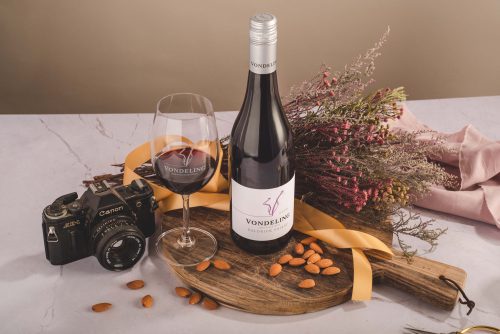

Petit Gift Pack (2 pack option)
R325.00 (incl. VAT)
Option 1: Petit Chenin Blanc 2024 & Baldrick Shiraz 2022 OR Option 2: Petit Rouge Merlot 2022 & Sauvignon Blanc 2024 OR Option 3: Petit Chenin Blanc 2024 & Rose 2024 OR Option 4: Petit Rouge Merlot 2022 & Rose 2024 Packaged in a sophisticated, branded 2-pack cardboard wine carrier, finished with ribbon & fynbos from the farm. -
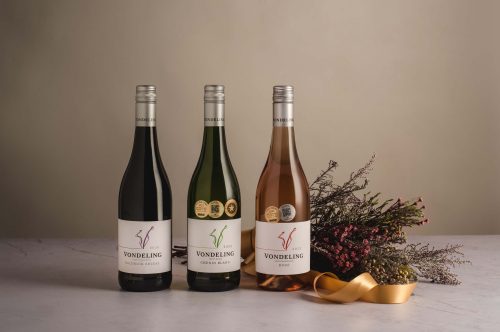
Petit Gift Pack (3 pack option)
R460.00 (incl. VAT)
Option 1: Petit Chenin Blanc 2024 & Rose 2024 & Petit Rouge Merlot 2021 OR Option 2: Petit Chenin Blanc 2024 & Rose 2024 & Baldrick Shiraz 2022 OR Option 3: Sauvignon Blanc 2024 & Rose 2024 & Petit Rouge Merlot 2021 OR Option 4: Sauvignon Blanc 2024 & Rose 2024 & Baldrick Shiraz 2022 Packaged in a sophisticated, branded 3-pack cardboard wine carrier, finished with ribbon & fynbos from the farm. -
Out of stock
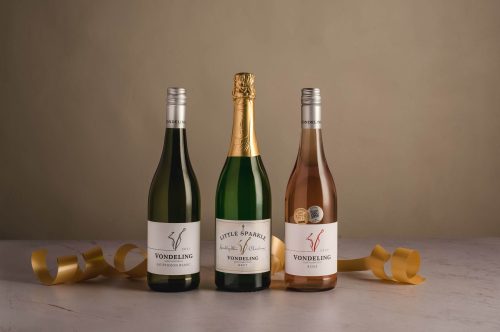
Petit Gift Pack (3 pack option)
R460.00 (incl. VAT)
Petit Chenin Blanc 2024 OR Sauvignon Blanc 2024 & Little Sparkle (100% Chardonnay Sparkling Brut) & Rose 2024 Packaged in a sophisticated, branded 3-pack cardboard wine carrier, finished with ribbon & fynbos from the farm. -
Out of stock
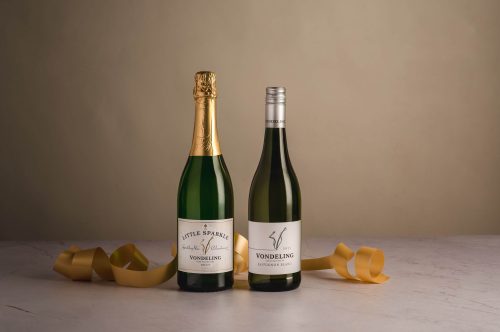
Festive Summer Gift Pack (2 pack option)
R375.00 (incl. VAT)
Little Sparkle (100% Chardonnay Sparkling Brut) & Option 1: Sauvignon Blanc 2024 OR Option 2: Petit Chenin Blanc 2024 OR Option 3: Petit Rouge Merlot 2022 OR Option 4: Baldrick Shiraz 2022 Packaged in a sophisticated, branded 2-pack cardboard wine carrier, finished with ribbon & fynbos from the farm.

